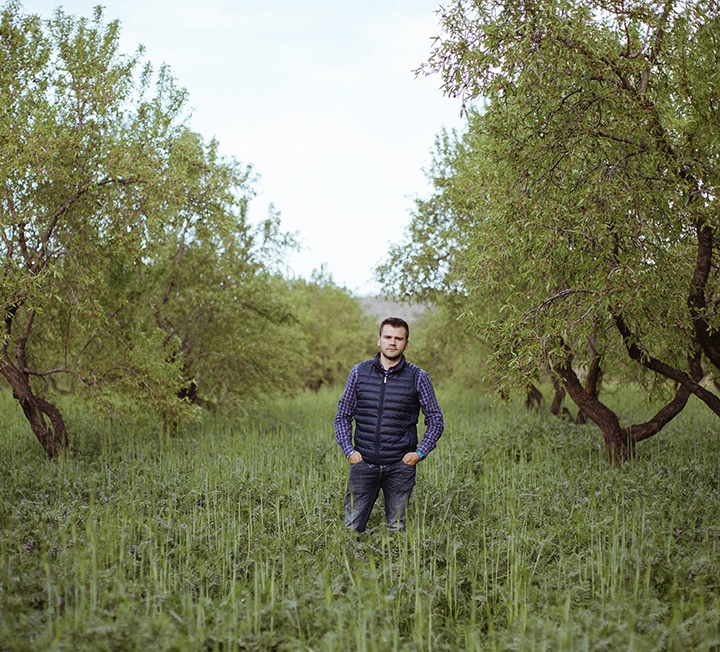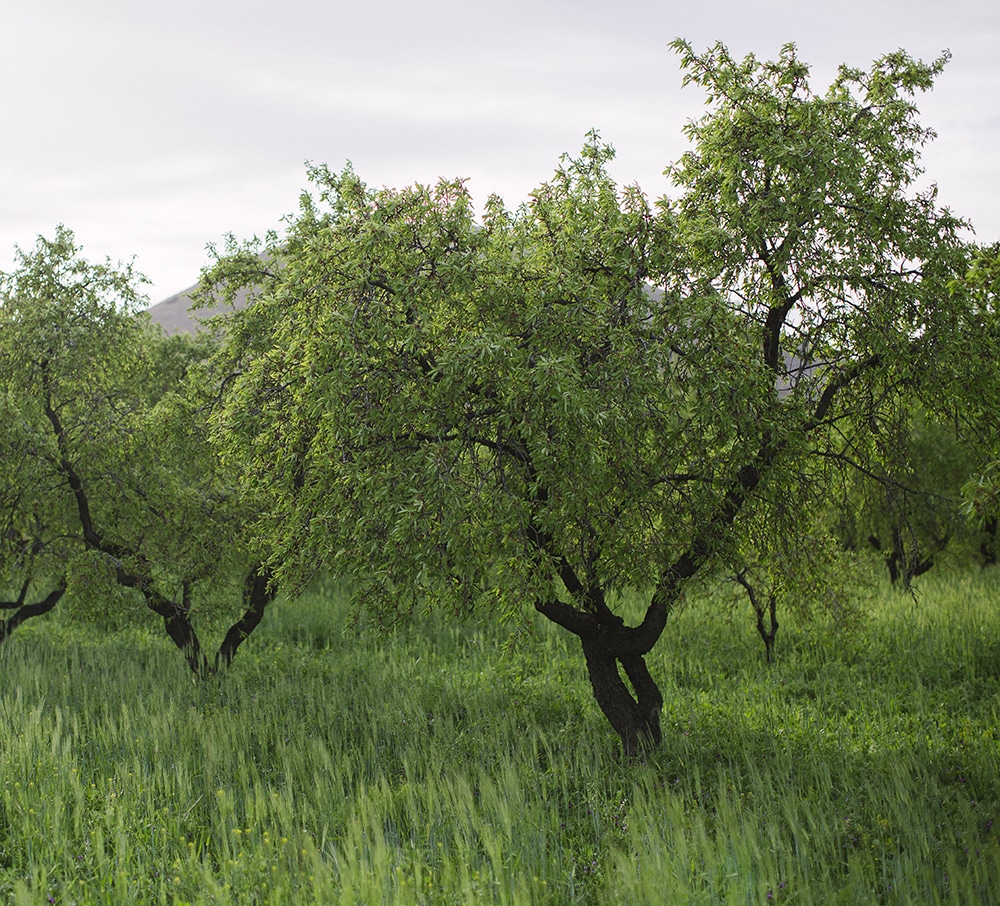Nuts in September
Charles Tebbutt of Food & Forest on the annual rush to harvest Kentish cobnuts
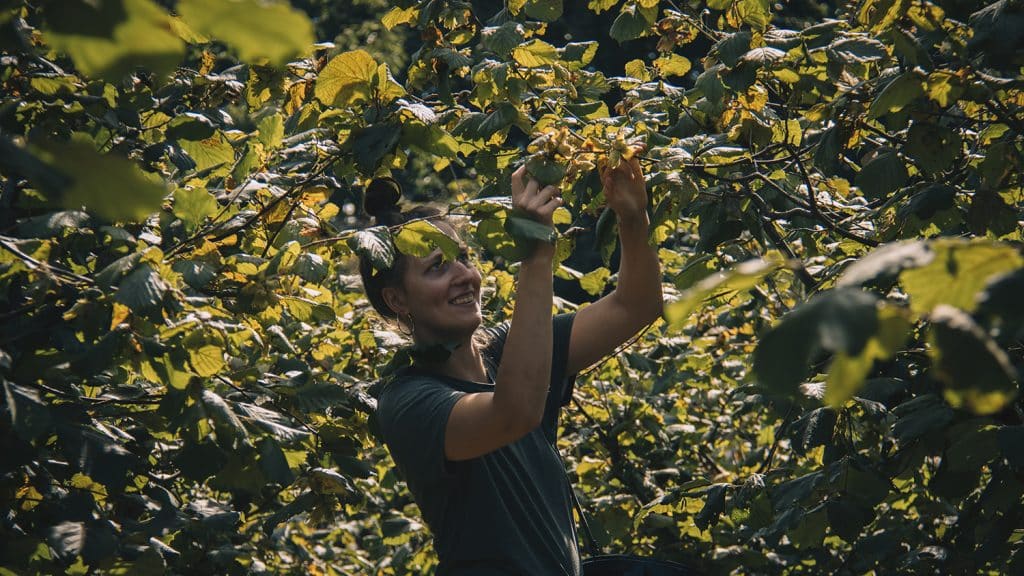

“IT’S COMMON IN AN ORCHARD TO KEEP GROWTH RIGHT DOWN, BUT WE LET OURS GROW UP WITH BLUEBELLS AND PRIMROSES”
So, what exactly is a cobnut? That, says Charles Tebbutt, founder of Food & Forest, is probably the question most often asked of him and his colleagues when they’re manning their Borough Market stand. The simple answer, he continues, is that a cobnut is a just hazelnut. But it’s a hazelnut with a very strong sense of time and place.
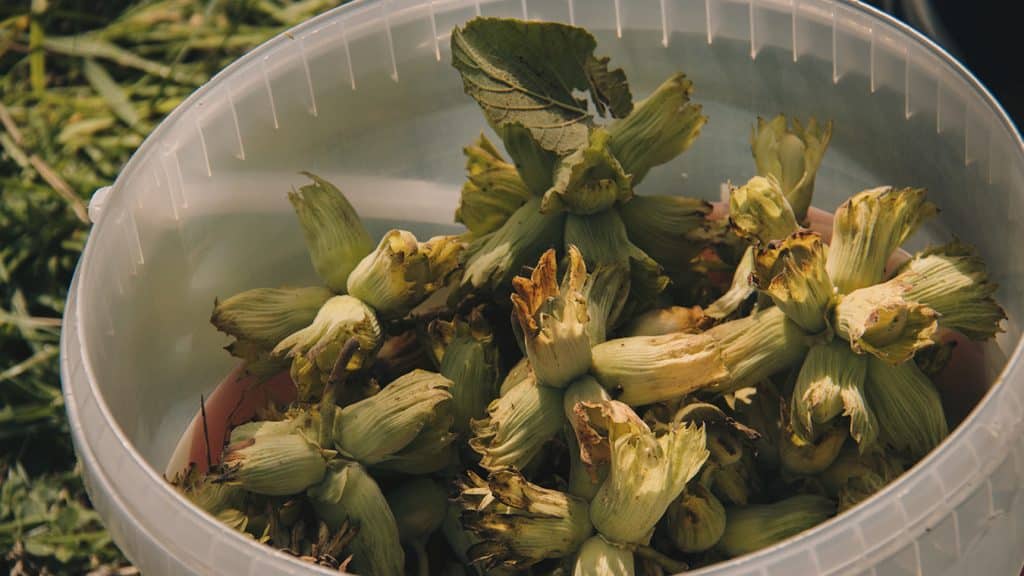
Around the world there are many species of hazel tree, from which numerous nut cultivars have been developed over the centuries, each one adapted to the microclimate and soil of its native region and the culinary preferences of the local population. The cobnut is an English variety synonymous with the county of Kent, where Charles and his colleagues maintain a beautiful historic orchard.
“The reason so many are grown in Kent is to do with the climate – it’s the Garden of England, after all – though there are producers elsewhere,” Charles explains. But while cobnuts would once have been a common sight in the shops and markets of London, production has in recent decades fallen off a cliff. “The reason it’s not more commonly grown today is that the nut has a peculiar shape and a very tight husk which makes it quite difficult to process mechanically. This adds an extra stage to the processing that you don’t get with other varieties.”
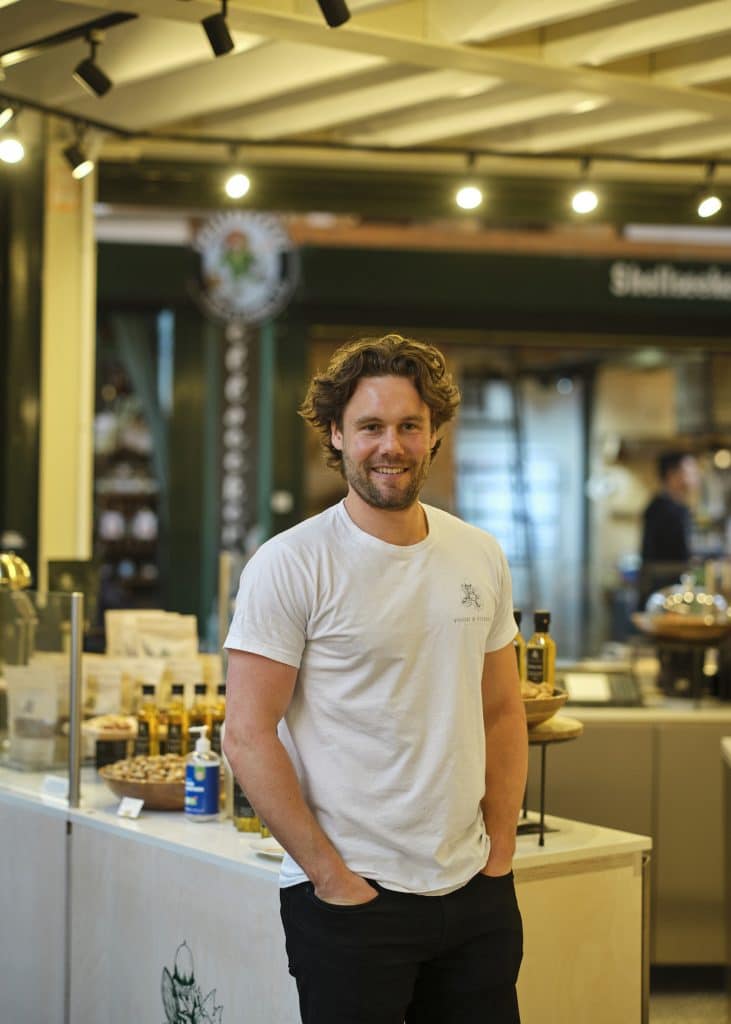
It also doesn’t help that the orchard’s entire bounty of cobnuts needs to be picked by hand in a matter of days, making harvesting hugely labour intensive. “Every year at the start of September, we harvest all our nuts in about two weeks,” says Charles. “The reason we work so quickly is that if you leave cobnuts on the trees for much longer you start losing catastrophic amounts to squirrels, which can genuinely be the difference between the year’s crop making or losing money.”
The 130-year-old orchard, which is managed in partnership with Gillian Jones under license from the National Trust, is located in the countryside close to Sevenoaks, bordered by high woodland. Like everything else at Food & Forest, the cobnuts are grown using agroforestry – a method of farming that limits soil erosion and encourages biodiversity by combining the cultivation of trees with that of other plants or animals. “The common practice in an orchard is to keep growth right down, mowing it every month or so, but we let ours grow up with bluebells and primroses,” Charles explains. The team have also been experimenting with the use of poultry to keep pests at bay.
For the first three weeks of September, the cobnuts kernels are sold on Charles’s stand in their fresh state. “When they’re fresh, they’re super creamy, with a kind of milky sappiness to them,” he says. “They have a lightness which is not there in dried or roasted nuts. I really like them – I find them refreshing, with a distinctive taste – but they have such a short window.”
Once that window is closed, the stall sells its cobnuts in their dried and roasted forms. Dried cobnuts are sweet and crunchy, with less of the milkiness of the fresh nuts – and that natural sweetness is intensified even further by roasting. “Roasting them creates more layers of flavour, really bringing out their sweet notes. It makes them great for cooking. We sell roasted cobnuts to bakeries for their cookies, cakes and patisseries. I’ve known people make dukkah – a Middle Eastern condiment made with herbs, nut, and spices – which I found really interesting. One of the stallholders at Borough Market uses them in vegan salads and another makes a wonderful dish of cobnuts, lentils and butternut squash. Personally, I like a bowl of good Greek yoghurt and some great honey, with roasted cobnuts sprinkled on top.”
